
Speed is the essence of a horse’s mystique, a characteristic that has enthralled humans for millennia. From the thunderous hooves of ancient warriors to the sleek bodies blurred across modern racetracks, horses are nature’s initial speedsters.
In an age where speed is measured by engines and machinery, horses are a reminder of living marvels shaped by centuries of selective breeding, cultural commerce, and sheer survival instinct. But what makes some horses the fastest in history?
By studying their history, science, and some surprising mashups with other sectors, we can better understand how these horses have shaped not just sport but culture and innovation, too. This list moves beyond simple breed clichés and enters the pure speed, endurance, and historical prominence of the fastest horse athletes ever.
1. Thoroughbred
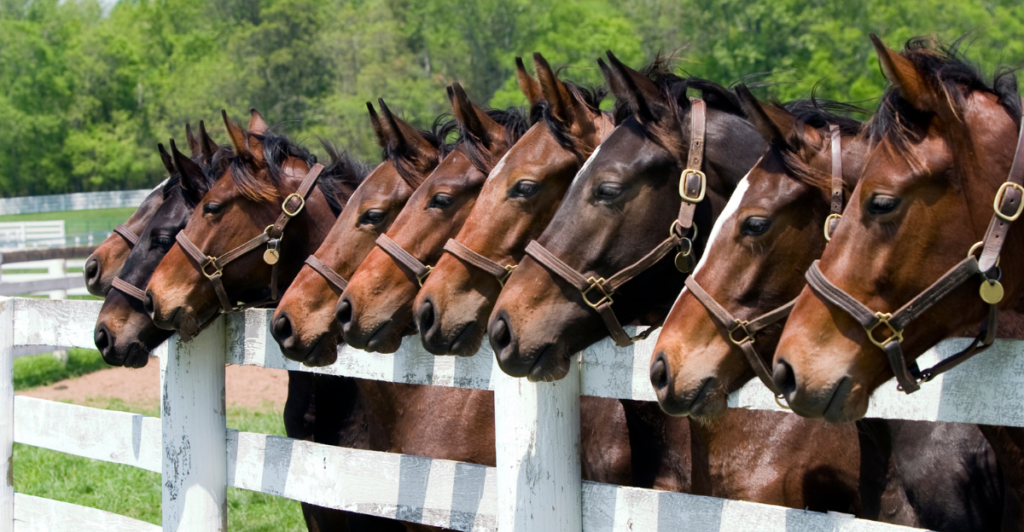
The Thoroughbred is the epitome of a racehorse, a breed engineered for speed and stamina over middle to long distances. Developed in 17th- and 18th-century England, Thoroughbreds were the result of interbreeding native mares with Arabian, Barb, and Turkoman stallions—horses recognized for their long-distance speed and endurance.
Through this precise breeding, Thoroughbreds have a speed rating of 40 mph. The record-breaker, Winning Brew, achieved a staggering speed of 43.97 mph over two furlongs in 2008, a testament to the breed’s phenomenal acceleration and endurance.
Beyond raw speed, their influence extends to industries such as pharmaceuticals and biomechanics, where their physiology is used for research into muscle function and injury prevention.
2. American Quarter Horse

Known as the ultimate sprinter of the horse world, the American Quarter Horse is bred for quick bursts of speed over short distances, namely the quarter-mile dash for which it was named. The breed can run up to 50 mph in short sprints, faster than most other horse breeds.
Developed in the American colonies by crossing English Thoroughbreds with Spanish horses native to the area, the Quarter Horse possesses the strength, agility, and muscular build for quick acceleration. Its adaptability has spread beyond racing to rodeo competition, ranch work, and even cinematic portrayals of the American West.
The Quarter Horse’s genetic makeup represents the ultimate of hybrid strength with speed and power combined in ways that revolutionized horse breeding and contributed to establishing other horse breeds around the world.
3. Arabian
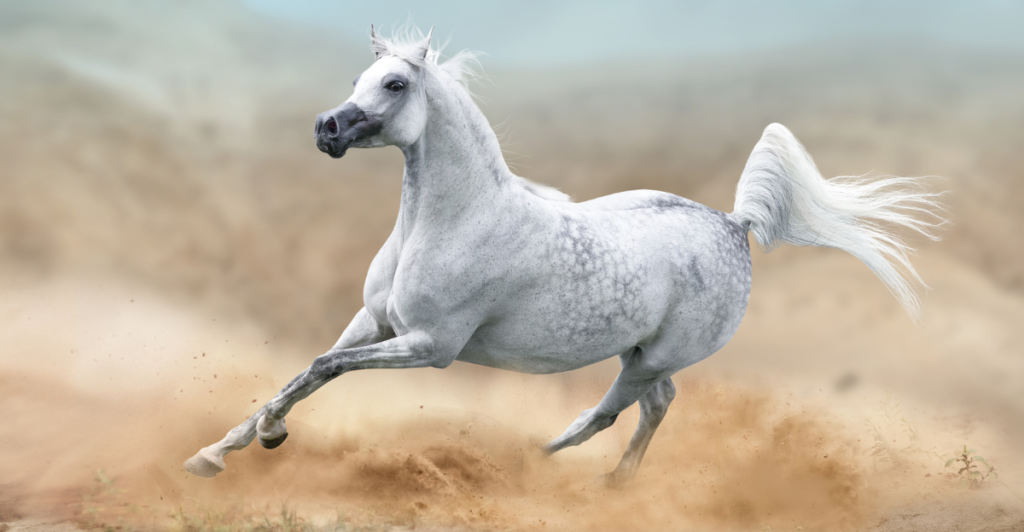
The Arabian horse is a marvel of endurance and speed, bred by Bedouin tribes to survive and excel in harsh desert environments. Though not the quickest when sprinting, Arabians can sustain speeds of around 40 mph over long distances and are, therefore, unmatched endurance performers.
Their distinctive wedge-shaped heads, high tail carriage, and delicate bone structure are not just aesthetic traits but are adaptations that allow them to breathe better and dissipate heat. Its genetics have influenced virtually every modern-day racehorse breed, passing on endurance and resistance traits.
In a world that increasingly focuses on specialization, the Arabian challenges the belief that speed and stamina are contradictory, showing that the two create a wonderful and captivating athlete.
4. Appaloosa
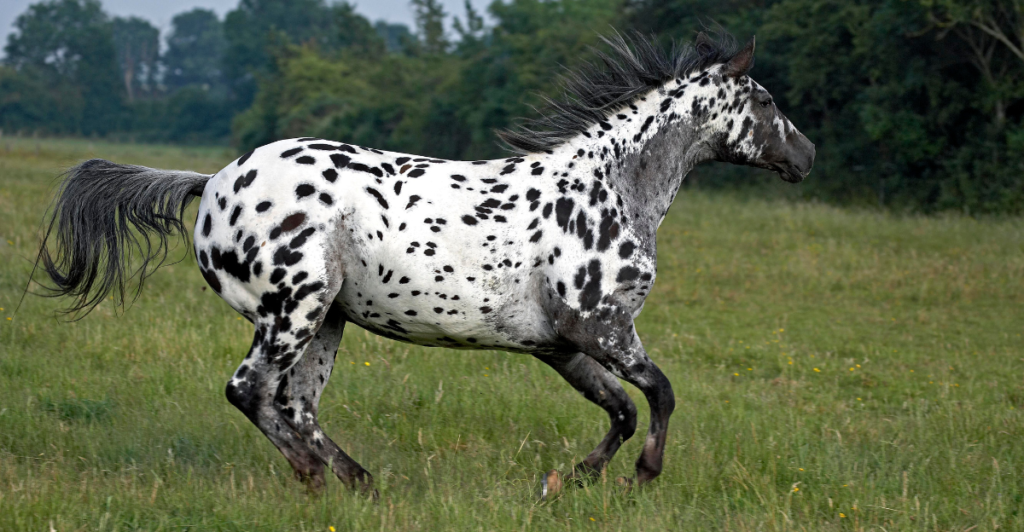
The Appaloosa is equally famous for its flashy leopard-splotched coat as it is for its impressive speed and versatility. Bred by the Nez Perce people through cross-breeding Spanish horses, Arabians, and Quarter Horses, Appaloosas are capable of running up to 55 mph in sprints, although many equine practitioners believe this speed to be impossible.
However, their versatility across competition disciplines—ranging from Western competition reining and roping to English riding and endurance racing—is uncontested. The breed’s history is a rich tale of cultural interchange, selective breeding, and survival.
Their unique coat patterns have also become iconic in art and the media, symbolizing a combination of athleticism and beauty. This breed exemplifies how the combination of speed, versatility, and cultural sensitivity can make it a standout among fast horses.
5. Andalusian
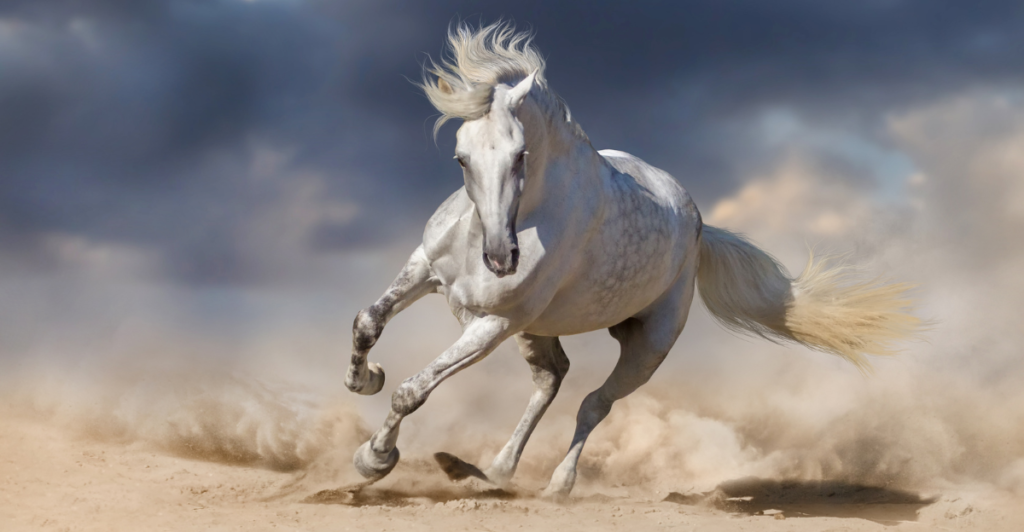
The Andalusian, or Pure Spanish Horse, combines power, speed, and grace in a way that defies expectations. Reaching around 50 mph at their top speeds, Andalusians have been prized since the Middle Ages for athleticism and agility.
Historically, they were used by European nobility as warhorses, valued for their ability to perform complex maneuvers at speed. Their influence can be observed in many modern breeds and has shaped the development of horses across Europe and in the Americas.
Andalusians excel at sports, such as dressage and show jumping, where their beauty and speed contradict the argument that power and grace are mutually exclusive. Their cultural and historical significance and sporting prowess make this breed a compelling case study in how speed and beautiful artistry can be combined.
6. American Paint Horse
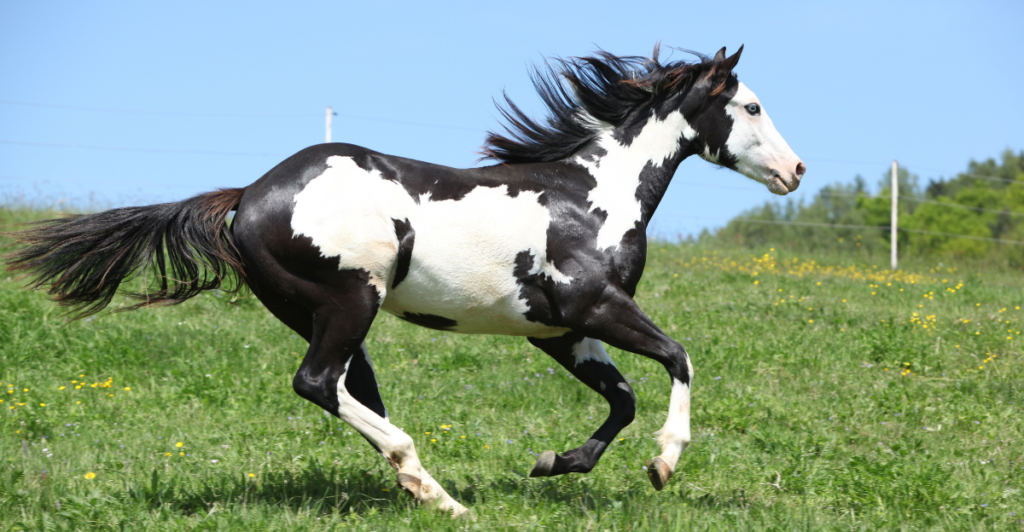
The Paint Horse is a stunning blend of power, speed, and striking coat patterns. It combines the genetic material of the Quarter Horse and Thoroughbred with distinctive pinto markings.
Paint Horses are able to gallop up to 40 mph and are versatile competitors, excelling in Western and English riding disciplines as well as in racing circuits. Their achievements in rodeo, trail, and show jumping reinforce the fact that speed is more than raw velocity but also temperament and the ability to adapt.
The breed’s success shows the importance of genetic diversity and selective breeding programs that merge performance and beauty. In today’s science-based world of equine breeding, the Paint Horse reminds us that showmanship and variety can be as essential as speed in making a champion.
7. Akhal-Teke
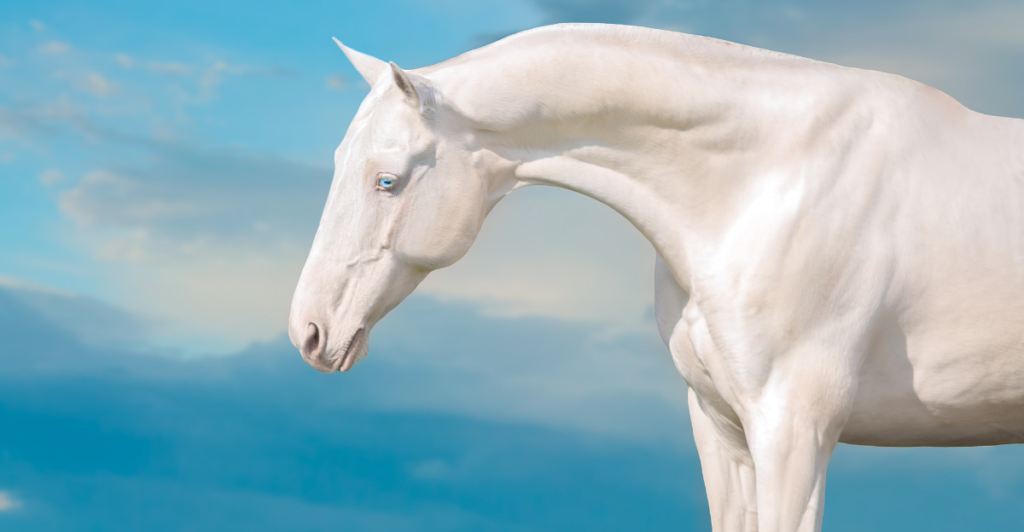
The Akhal-Teke is an old breed from Turkmenistan, renowned for its metallic coat and remarkable endurance. It was bred for stamina so that it could cover vast distances as quickly as possible in harsh weather conditions.
While they aren’t the fastest sprinters, at around 35 mph, they can sustain their speed, making them stand out among other horse breeds. Their unique hair structure, which gives it a golden glow, has fascinated geneticists and artists as a representation of beauty and functionality.
The Akhal-Teke has drawn attention during Olympic dressage and endurance events, challenging the dominance of Western breeds in advanced equestrian pursuits. Its survival and performance under extreme conditions offer important lessons in evolutionary adaptation, toughness, and the interaction between genetics and performance.
8. Standardbred
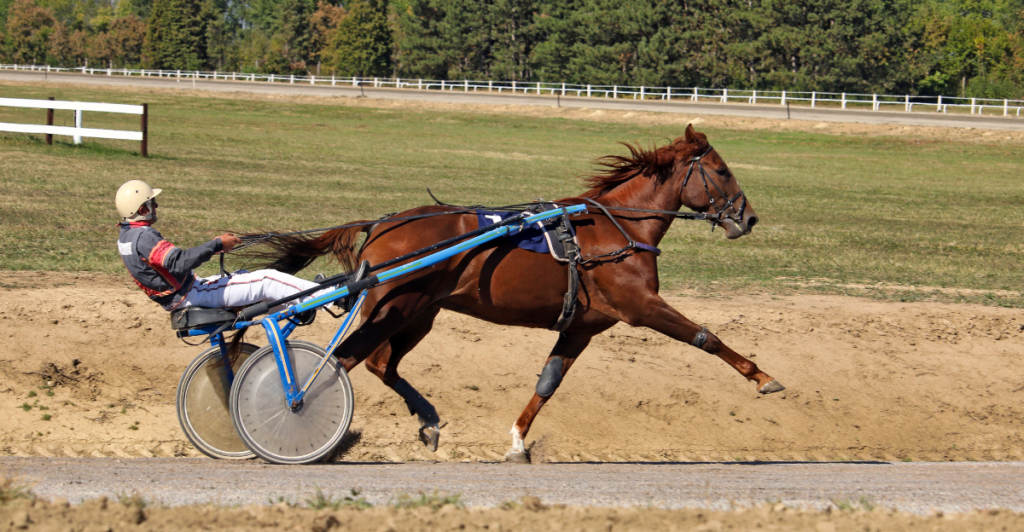
The Standardbred is primarily linked with harness racing, where it propels a sulky at incredible speeds, usually up to 30 mph. Bred in the 18th century from Thoroughbred stock, Standardbreds are created for strength, consistency, and stamina over sprinting speed.
Their unique gait of trotting or pacing makes them masters of the specialized equestrian art of speed and accuracy. Apart from racing, Standardbreds are valued for their trainability and calm demeanor, making them a favorite for pleasure riding and therapeutic riding programs.
The breed’s role in the rise of harness racing is a fascinating example of how human creativity and horse breeding intersect, mixing sport, technology, and genetics to create a superior horse athlete.
9. Mustang
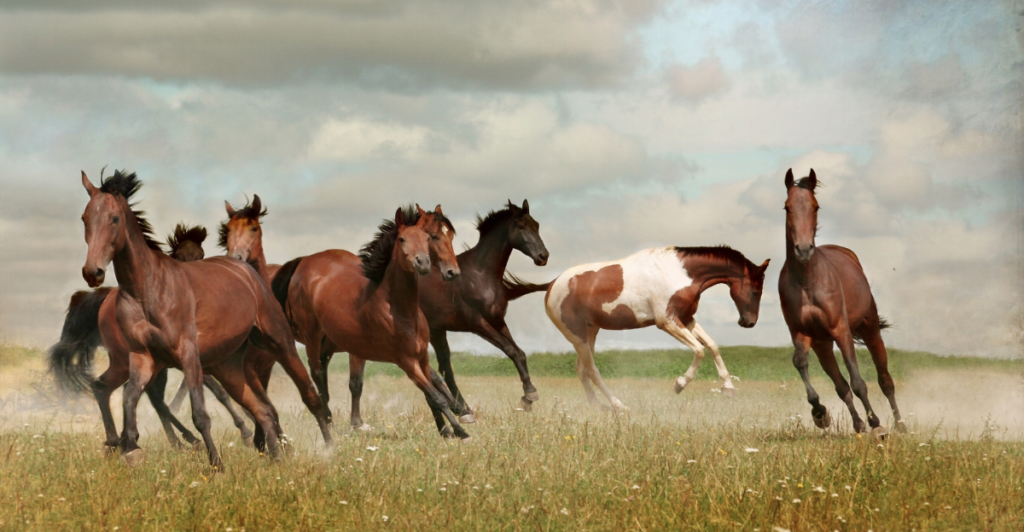
The Mustang is the icon of wild freedom and speed, descended from Spanish horses brought to the Americas centuries ago. Although generally slower than thoroughbred racing horses, Mustangs will trot at 25–30 mph, with some individuals resorting to more accelerated sprints.
Their past is one of survival, adaptation, and myth-making—a living legacy of feral genes honed by nature rather than man. Mustangs have spanned from inspiring automobile design to conservation efforts, symbolizing the unbridled frontier and resilience.
Their speed is not just quantitative but embodies the intangible qualities of spirit and lineage, reminding us that the fastest horse is sometimes the one that runs free, unburdened by the constraints of breeding or competition.
Explore more of our trending stories and hit Follow to keep them coming to your feed!

Don’t miss out on more stories like this! Hit the Follow button at the top of this article to stay updated with the latest news. Share your thoughts in the comments—we’d love to hear from you!







